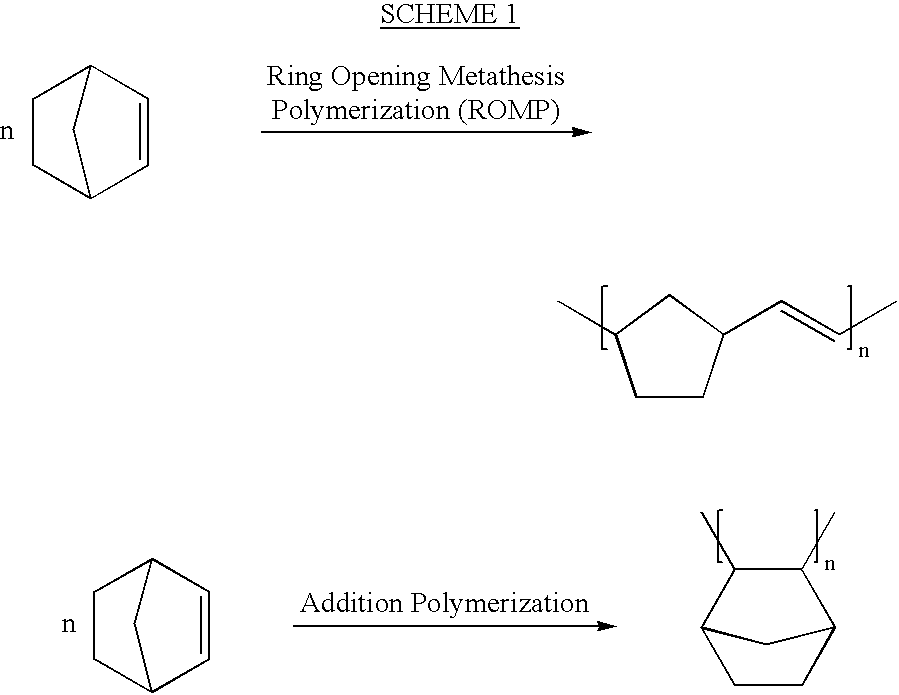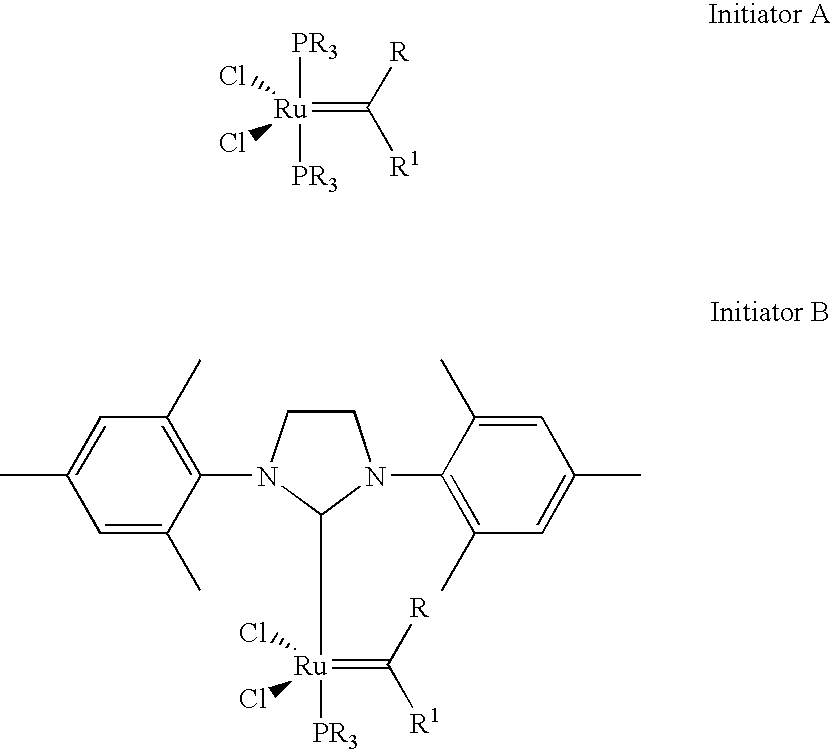High activity metal carbene metathesis catalysts generated using a thermally activated N-heterocyclic carbene precursor
a catalyst and metal carbene technology, applied in the field of metal carbene metathesis catalysts, can solve the problems of olefin metathesis, defined alkylidene catalysts, and slow polymerization process initiation process
- Summary
- Abstract
- Description
- Claims
- Application Information
AI Technical Summary
Benefits of technology
Problems solved by technology
Method used
Image
Examples
example 1
A 50 g mass of DCPD (containing 8 wt % trimerized DCPD) was polymerized using Ru 716=0.0361 g in the presence of s-ImesHCCl3=0.0215 g at a DCPD:Ru:s-ImesHCCl3 reactant ratio of (7500:1:1)by heating the mixture to a starting temperature of 49° C.
Result: Time to reach maximum temperature (Tmax)=81 seconds. Tmax=227° C. Conversion measured by thermogravimetric analysis (TGA)=97.35%. Glass transition temperature measured by thermal mechanical analysis (TMA)=154° C. % Residual monomer (toluene extraction at room temperature)=0.51%.
example 2
A 50 g mass of DCPD was polymerized using Ru 716=0.00677 g in the presence of s-ImesHCCl3=0.0041 g at a DCPD:Ru:s-ImesHCCl3 reactant ratio of (40,000:1:1) by heating the mixture to a starting temperature of 49° C.
Result: Time to reach maximum temperature (Tmax)=510 seconds. Tmax=192° C. Conversion measured by thermogravimetric analysis (TGA) performed under nitrogen @ 400° C.=87.53%. Glass transition temperature measured by thermal mechanical analysis (TMA)=105° C. % Residual monomer (toluene extraction at room temperature)=9.74%.
example 3
A 50 g mass of DCPD (containing 8 wt % trimerized DCPD)was polymerized using Ru 716=0.0090 g in the presence of s-ImesHCCl3=0.0054 g at a DCPD:Ru:s-ImesHCCl3 reactant ratio of (30,000:1:1) by heating the mixture to a starting temperature of 50° C.
Result: Time to reach maximum temperature (Tmax)=312 seconds. Tmax=205° C. Conversion measured by TGA performed under nitrogen @ 400° C.=90.95%. Glass transition temperature measured by thermal mechanical analysis (TMA)=117° C. % Residual monomer (toluene extraction at room temperature)=6.94%.
PUM
 Login to View More
Login to View More Abstract
Description
Claims
Application Information
 Login to View More
Login to View More - R&D
- Intellectual Property
- Life Sciences
- Materials
- Tech Scout
- Unparalleled Data Quality
- Higher Quality Content
- 60% Fewer Hallucinations
Browse by: Latest US Patents, China's latest patents, Technical Efficacy Thesaurus, Application Domain, Technology Topic, Popular Technical Reports.
© 2025 PatSnap. All rights reserved.Legal|Privacy policy|Modern Slavery Act Transparency Statement|Sitemap|About US| Contact US: help@patsnap.com



